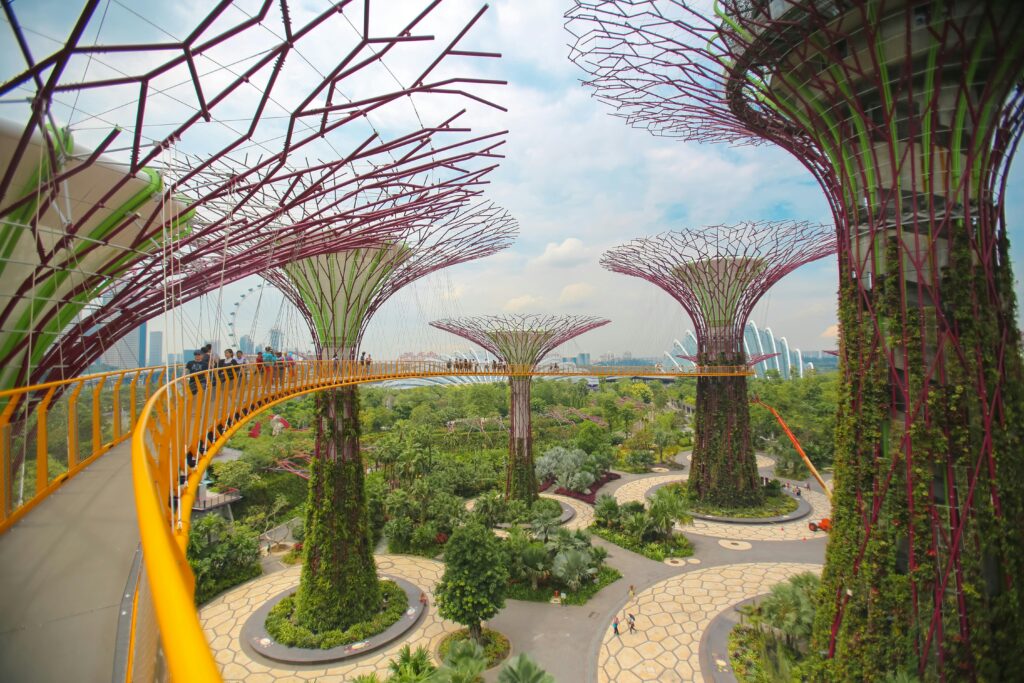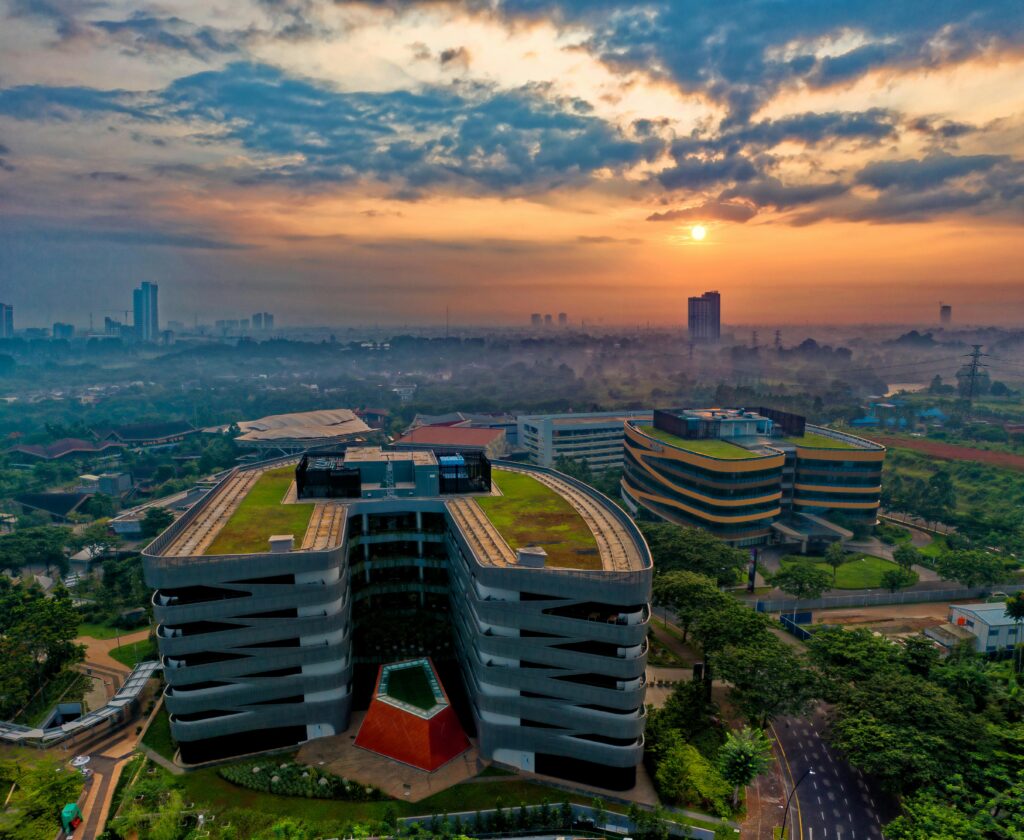Between skyscrapers and sidewalks, a quiet revolution is growing: urban gardening. It fills forgotten concrete spaces with greens, turning cities into sustainability hubs. If you lack a background or plant-nurturing expertise, start here with soil, sunlight, and the stubborn belief that small roots can reshape cities.

What Is Urban Gardening?
Urban gardening means turning your underutilized city spaces into productive green areas. It’s not limited to balconies, windowsills, or rooftops, but it even extends to that space under the staircases that you have been ‘drag-planning’ to transform for ages.
It’s about growing food, herbs, ornamental plants, or just any greens in compact, creative ways, regardless of the square footage. Unlike traditional gardening, urban gardening prioritizes adaptability to fit into small spaces.
It’s the ultimate solution for apartment dwellers thriving within the constraints of cities with marginally low air quality index and can’t seem to survive without air purifiers.
Important Statistics Related To Urban Gardening
- In a world where 30% of global food production is wasted (UNEP, 2021), urban gardens offer a radical alternative: systems where every scrap, drop, and seed is valued.
- According to the United Nations Food and Agriculture Organization (FAO), urban and peri-urban farms already supply 15–20% of the world’s food, and this potential grows when gardens prioritize circular economy principles.
- According to the United Nations, cities occupy just 3% of the Earth’s land but devour 60-80% of its resources and belch 70% of emissions. Urban gardening flips this script.
How Urban Gardening Benefits A Sustainable Lifestyle?
With urban gardening, you can turn household waste into nutrient-rich resources.
Composting food scraps like vegetable peels or coffee grounds reduces landfill contributions while creating natural fertilizer for your plants. This cycle transforms “trash” into a valuable asset, cutting reliance on synthetic fertilizers and closing the nutrient loop in your home, creating a perfect depiction of circular economy.
By growing food locally, you can slash transportation-related emissions.
When you harvest herbs or vegetables from your balcony or windowsill, you eliminate the need for store-bought produce shipped across continents. This direct-from-soil-to-table approach reduces fossil fuel use and packaging waste tied to global food supply chains.
Even small gardens support pollinators and local ecosystems.
Urban gardens act as thriving hotspots for miniature wildlife. Planting native flowers like coneflowers or herbs attracts bees, butterflies, and birds, strengthening biodiversity in concrete-dominated areas.
Nurturing plants and surrounding yourself with greens offer a respite from urban stress.
Tending to greenery has been shown to lower cortisol levels and improve mood. Urban gardening provides a daily connection to nature, counteracting the sensory overload of city life with moments of calm and purpose.
Town gardening provides opportunities to build shared green spaces and collaborate.
Community gardens or rooftop plots become hubs for exchanging knowledge, seeds, and harvests. These spaces bridge social divides, creating opportunities for mentorship, cultural exchange, and collective problem-solving around sustainability.

8 Innovative Urban Gardening Techniques
Growing up in a small town surrounded by forests, I watched as concrete slowly replaced trees and sprawling developments erased the wild spaces I loved. It felt like a losing battle until I discovered how urban gardening could reclaim neglected corners of the city.
Today, scientific advancements and grassroots creativity are turning cramped spaces into thriving ecosystems. Here are eight emerging urban gardening techniques with a collection of plants most suited for each method, proving how nature can find its way even in the densest cities:
1. Easement Gardens
Those narrow strips between sidewalks and streets that are often overlooked, can become vibrant green corridors. By planting drought-tolerant herbs like rosemary or sage or native flowers like coneflowers, you create pockets of life that survive foot traffic and seasonal shifts. These gardens soften urban edges while requiring minimal maintenance.
2. Micro Gardening
When space is scarce, think small. Micro gardening uses repurposed containers—mason jars, tin cans, or even shoe organizers—to grow salad greens, radishes, or herbs on windowsills or countertops. This method prioritizes efficiency, letting you harvest fresh ingredients without dedicating square footage to traditional beds.
3. Apartment Gardening
Vertical space is a renter’s best friend! Hang planters on your sunlit windows. Opt for wall-mounting shelves to showcase cascading plants like pothos for a “bazzing!” Use compact LED grow lights to nurture herbs like basil and parsley.
Dwarf vegetable varieties, such as cherry tomatoes or patio peppers, thrive in pots, turning cramped apartments into edible jungles.
4. Rooftop Gardens
Sun-drenched rooftops are ideal for growing heat-loving crops like strawberries, kale, or dwarf fruit trees. Lightweight containers and wind-resistant plant choices prevent structural strain, while proper waterproofing ensures longevity.
Most importantly, these high-rise gardens reduce urban heat islands, cooling the buildings naturally.
5. Backyard Gardening
Even modest yards can host raised beds or trellises. Grow zucchini, pole beans, or leafy greens in compost-enriched soil. Intersperse flowers like marigolds to repel pests, creating a self-sustaining micro-farm that maximizes utility while enhancing the overall beauty.
6. Vacant Lot / Parking Lot Gardening
Abandoned spaces become community assets when neighbors collaborate. You can start this initiative in your neighborhood by testing soil for contaminants. Then, layer compost to revitalize it.
Hardy crops like sunflowers, potatoes, or garlic adapt well to these conditions. They transform barren lots into productive plots that foster connection by providing green space for get-togethers and tackling local food security.
7. Hydroponics
Soil-free systems like hydroponics let you grow lettuce, mint, or peppers in nutrient-rich water. Countertop kits simplify the process for beginners, using pumps to circulate water and LED lights to mimic sunlight. This method conserves water and accelerates growth, making it ideal for tech-savvy urbanites.
8. Raised Beds
Made of wood or metal, these elevated beds offer control over soil quality and drainage. They’re perfect for root vegetables like carrots or beets, which struggle in compacted urban ground.



A Beginner-Friendly List Of Best Plants For Urban Gardening
- Herbs: Basil, mint, and chives grow vigorously in small pots and add fresh flavor to meals.
- Leafy Greens: Spinach, kale, and arugula thrive in shallow containers and offer “cut-and-come-again” harvests.
- Compact Veggies: Cherry tomatoes, dwarf peppers, and bush beans are bred for small spaces.
- Pollinator Magnets: Lavender, nasturtiums, and sunflowers support bees while adding color.
- Low-Light Champions: Snake plants, pothos, or microgreens tolerate dim apartments.
Pro Tip: Avoid fussy plants like cauliflower or asparagus early on. Focus on forgiving, fast growers that don’t die on you if you miss a day of watering.
How Can You Start An Urban Garden With Zero Experience?
Here’s how to start, even if you’ve never touched a trowel:
- A single pot of basil, a windowsill tray of microgreens, or a hanging succulent is all you need to begin. Small projects build confidence and help you understand your space’s unique conditions, like how much sunlight your balcony gets or how often your herbs need water.
- Observe your space for a week to track sunlight patterns. Most edible plants need 4 to 6 hours of direct sunlight daily. If your apartment has limited light, prioritize shade-tolerant plants like mint, parsley, or snake plants, which thrive even in dim corners.
- Use a lightweight potting mix designed for containers, not garden soil. Potting mixes drain better and reduce the risk of root rot, which is critical for small spaces. If you’re composting, blend a handful into the mix to boost nutrients naturally.
- Overwatering is the most common mistake. Wait until the top inch of soil feels dry before watering again. For busy schedules, self-watering pots or simple drip systems (like a water bottle with a hole in the cap) can keep plants hydrated without daily attention.
- Turn household items into planters: old coffee cans, colanders, or even a dresser drawer can become homes for plants. Drill drainage holes to prevent waterlogging and embrace imperfections; a chipped mug gives character to a thyme plant.

Urban Gardening Is The Key To A Circular Economy
Urban gardening reimagines how cities function. When you grow a tomato plant in a repurposed bucket, you’re not just saving a plastic pot from a landfill. You’re participating in a chain that turns kitchen scraps into compost, sunlight into meals, and surplus into shared abundance.
The impact scales.
- Detroit’s 1,500+ urban gardens now produce 200 tons of fresh food annually on once-abandoned land.
- In Singapore, rooftop farms supply 10% of the nation’s leafy greens using 95% less water than conventional farms. (WeForum)
These aren’t just feel-good anecdotes; they’re blueprints for cities that regenerate instead of extract.
Your garden is a microcosm of this shift. Every seed saved, mason jar reused, and every neighbor you teach to compost stitches resilience into the fabric of your community.
It’s how we rebuild—not with grand gestures, but with soil under our nails and roots in the cracks of sidewalks.

